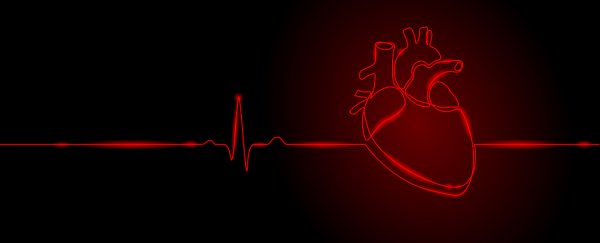Heart attacks are relatively common in human beings but much rarer in the rest of the animal kingdom – and new research using mice suggests the loss of a single gene, some 2-3 million years back in evolutionary history, could be amongst the reasons why.
Our deadliest cardiovascular events tend to stem from atherosclerosis, the build up of fatty deposits in the arteries; such events are responsible for a third of deaths worldwide. In the rest of the animal kingdom though, heart attacks due to atherosclerosis are "extremely rare".
Even though humans have some "environmental and behavioural factors" that contribute to our heart attack risk, according to the study, a single genetic mutation specific to humans could be contributing, too.
Researchers point their fingers at the CMAH gene, long dormant in humans, which produces a sialic acid sugar molecule called Neu5Gc in non-human mammals. The latest study shows this could be helping to keep atherosclerosis in check.
We've been living without CMAH for several million years, possibly due to a malarial parasite that targeted it, and researchers are still unravelling the myriad effects the loss of this gene could have on the human body.
Researchers genetically modified a group of mice to deactivate CMAH and eliminate Neu5Gc, thus making them more 'human-like', with a biology somewhat similar to our own. The team found that the severity of atherosclerosis almost doubled compared with a group of control mice.
"The increased risk appears to be driven by multiple factors, including hyperactive white cells and a tendency to diabetes in the human-like mice," says physician Ajit Varki, from the University of California San Diego.
"This may help explain why even vegetarian humans without any other obvious cardiovascular risk factors are still very prone to heart attacks and strokes, while other evolutionary relatives are not."
Dorian Haskard, professor of cardiovascular medicine and rheumatology at Imperial College London, who was not involved in the study, told The Guardian that scientists shouldn't rush into extrapolating these mouse model results to humans – not least because the disease is greatly accelerated in mice.
While many risk factors are linked to atherosclerosis, including blood cholesterol, physical inactivity, age, hypertension, obesity and smoking, these factors don't apply in roughly 15 percent of first-time cardiovascular disease (CVD) events.
What's more, heart attacks due to atherosclerosis are rare even in some of our closest genetic relatives, including chimps; that applies to chimps with human-like risk factors, too - such as hypertension and physical inactivity.
CMAH and Neu5Gc could explain that discrepancy. The team also looked at the effects of eating red meat, finding that when the modified mice were fed a Neu5Gc-rich diet – mimicking red meat intake – the risk of atherosclerosis increased again.
This ties in with previous research findings that suggest human bodies, not used to Neu5Gc, could treat it as a foreign invader when a lot of it appears in our system (for example, when consuming red meat).
In turn, this could be triggering an inflammatory response from the immune system - if confirmed, this explanation will greatly add to our understanding of why eating a lot of red meat has been linked to heart problems.
The research has been published in PNAS.
